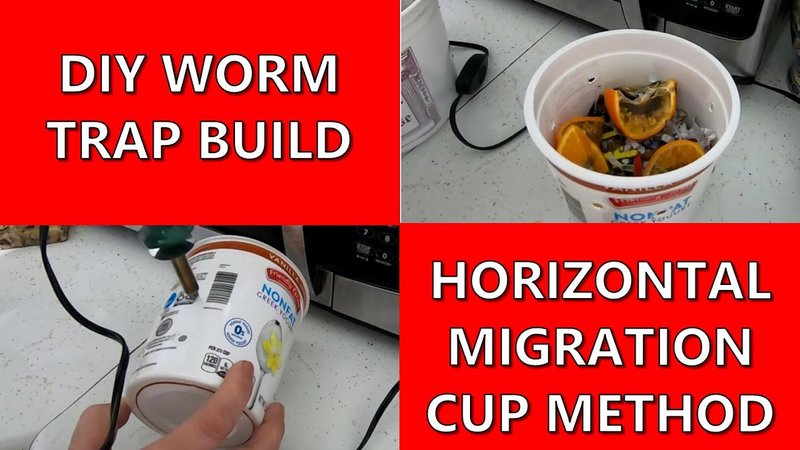
First off, bobbit worms have an impressive ability to hide in the sandy bottoms of reefs and aquariums. They can grow quite lengthy—some even reaching up to 10 feet! When you’re attempting to catch one, you need a trap that can lure them effectively while allowing you to retrieve them without a fuss. The best part? You don’t need any fancy equipment or advanced skills to build this trap. Just a little creativity and the right materials, and you’ll be ready to go!
Understanding Bobbit Worms
Before we dive into the trap-making process, it’s essential to understand the creature you’re dealing with. Bobbit worms, or Eunice aphroditois, are marine polychaete worms known for their impressive speed and hunting prowess. These worms are nocturnal predators, meaning they mostly come out when the lights are low. Their primary strategy involves waiting patiently in their burrows for unsuspecting fish to swim by. Once they have a target in sight, they strike with lightning-fast reflexes, using their sharp jaws to snag dinner.
Interestingly, bobbit worms can regenerate lost segments of their bodies, making them quite resilient. This adaptability contributes to their survival in various environments, from tropical reefs to home aquariums. You might be wondering, why capture them? Well, aside from studying their behavior and keeping them in controlled environments, bobbit worms can help manage the populations of smaller fish or invertebrates in your tank.
Materials You’ll Need
Now, let’s gather what you need to create this bobbit worm trap. You won’t have to visit a specialty store; most items are likely available at your local hardware store or online. Here’s a quick list:
- Plastic Container: A sturdy container with a lid. A 5-gallon bucket or a large plastic storage bin works well.
- Netting: Fine mesh aquarium netting or similar material to keep the worms from escaping.
- Rocks or Weights: To hold the trap in place on the ocean floor or aquarium substrate.
- Bait: Fish scraps or sinker food that will attract the worms.
- Drill or Sharp Knife: For making holes in your container.
Gathering these items shouldn’t take long, and you can even involve family or friends in the DIY process. It’s like crafting your own fishing gear!
Building the Trap
Once you have your materials, it’s time to start building! This part is pretty straightforward, and you’ll find that making your own trap can be a fun project. Here’s a step-by-step guide to ensure everything goes smoothly:
1. Prepare the Container: Start by drilling small holes in the sides or base of your plastic container. The holes should be big enough for the bobbit worm to enter but small enough to keep it contained. Aim for several holes – this increases the chances of attracting the worm.
2. Add Netting: Cut a piece of netting slightly larger than the opening of your container. Secure it around the entry holes you just made. You can use silicone or adhesive to hold it in place. This will act as a barrier, preventing the worm from escaping once it enters.
3. Bait the Trap: Place your bait inside the container. Fish scraps work wonders since they’re aromatic and enticing for bobbit worms. The goal here is to get the worm curious enough to venture in.
4. Seal the Lid: Once everything is in place, cover your trap with a lid. This seals in the smell of the bait and helps keep out unwanted creatures. Make sure the lid is secure, especially if you’re using the trap in a tank.
Placement of Your Trap
Now that your DIY trap is ready, the next step is figuring out where to place it. Bobbit worms prefer darker areas where they can blend in, so think about the best spots both in your aquarium and in natural environments. Here’s what to keep in mind:
1. Aquarium Setup: If you’re trapping in an aquarium, choose a corner or under a rock where the bobbit worm might feel safe. Ensure the trap sits flat against the substrate so it doesn’t tip over.
2. Natural Environments: When placing your trap in the ocean, aim for sandy bottoms near rocky structures. You can use weights or rocks to anchor the trap firmly so it doesn’t drift away with currents.
3. Timing Is Key: Remember that bobbit worms are nocturnal, so it’s best to set your trap in the evening and check it in the morning. This increases the likelihood of catching one without waiting all night yourself.
Checking the Trap
After a night of waiting, it’s time to check your trap. This part can feel like a mini adventure! Here’s how to do it effectively:
1. Retrieve the Trap: Carefully pull your trap out of the water. If it’s in an aquarium, do this slowly to avoid disturbing the water too much.
2. Examine the Container: Look inside the trap. If you’re lucky, you might find a bobbit worm! If there’s nothing there, don’t be discouraged. It might take a few tries to attract one, as they’re tricky little creatures.
3. Resetting the Trap: Whether you catch something or not, it’s a good idea to reset the trap. Replace the bait and ensure everything is intact for the next attempt.
Alternative Methods for Capturing Bobbit Worms
If building a DIY trap isn’t your cup of tea or you want to explore other options, there are alternatives worth considering:
1. Commercial Traps: Some companies sell specialized traps designed specifically for bobbit worms. These can save you time and ensure better effectiveness. They often come with built-in features to minimize escape chances.
2. Manual Extraction: For the more daring, you can also try extracting bobbit worms manually using a siphon or even your hands (wear gloves!). This method can be risky as you might encounter their sharp jaws.
3. Collaborating with Experts: If you’re still unsure or new to this, consider teaming up with an experienced aquarist or marine biologist. They might provide tips and tricks that can enhance your trapping game.
Why It Matters
Understanding and capturing bobbit worms can be essential for a few reasons. First, they play a unique role in the marine ecosystem, helping to balance populations of small fish and invertebrates. By observing them in controlled environments, you can learn more about their behaviors and contributions to their ecosystems.
Moreover, if you’re maintaining an aquarium, knowing how to manage these fascinating creatures can help you create a balanced environment. Bobbit worms can be a valuable addition if their populations are kept in check.
Ultimately, building a DIY trap for capturing bobbit worms isn’t just a fun project; it brings you closer to understanding the marine world. You’re interacting with nature in a responsible way while learning more about these incredible creatures.
In conclusion, building a DIY trap for bobbit worms can be an enjoyable and educational experience. With just a few materials and a little patience, you can dive into the fascinating world of these remarkable marine animals. So gather your supplies, follow the steps, and happy trapping!

